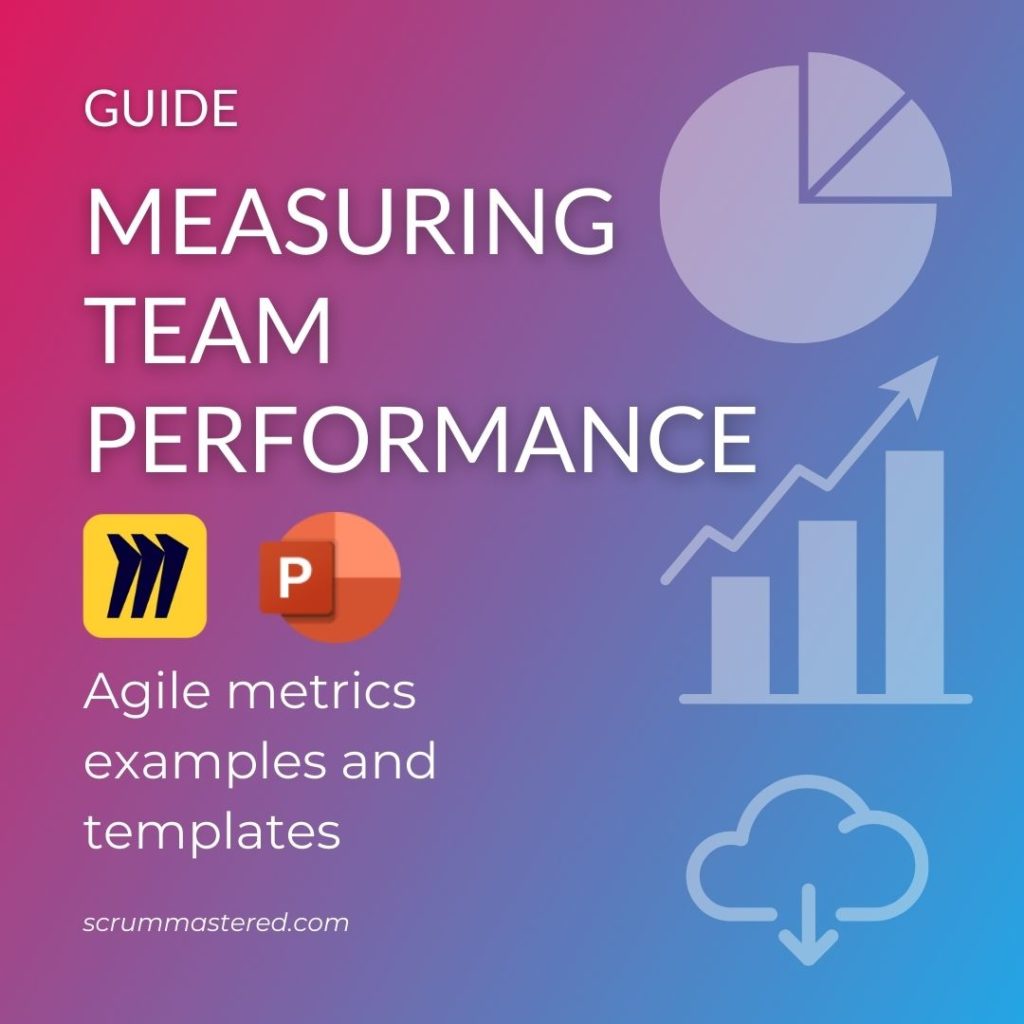There are a lot of high expectations associated with implementation of Scrum. They are often related to delivery and are based on some popular misconceptions about agility. For example, “Scrum helps teams deliver more faster”.
That is the reason why many organizations implementing Scrum demand metrics that can prove it, such as velocity. Otherwise, we are spending our time and money for nothing, right?
However, as we know, velocity is a terrible metric to measure success of Scrum or performance of the team. The question then arises – what metrics can a Scrum Master implement to show benefits the Scrum implementation brings to the organization?
Non-important Metrics
There are many metrics that we often collect that are not as important as we think. At least from the point of view of management (even if they think those metrics are important).
As I mentioned before, velocity, for example, is not the best metric to measure performance. So that would be a very useless metric for our management teams who are trying to understand if Scrum is working.
In one of my videos, I discuss the topic of velocity in a bit more detail.
These metrics are informational metrics that can be used by the team internally, but not as helpful for people outside of the team.
There are a few other similar metrics just like velocity that fall into this category.
Important metrics
Not all metrics are important, but some of them definitely are. You can use different measurements to help your team and organization in the Scrum implementation.
It’s essential to choose the right metrics, though. Otherwise, you would be waisting your time collecting them.
I divide useful metrics into three categories to help me understand how to use them: product, team, and process. Each one helps tackle challenges in relation to that focus area.
If my concern is product quality and I want to bring it to other people’s attention, I’ll use product metrics. For example, defects and customer satisfaction.
If I want to focus on the health of the team, I’ll choose some metrics in the team category. The most common one would be team morale / team happiness.
Obvisouly, if I want the team to look for improvements in the way they work, I’ll look into the process metrics such as effectiveness of Sprint events or continuous improvement.
Tracking the right metrics
The difficult part is to actually collect and track some of those metrics. To make things even more complex, usually the best metrics are the ones that are the most difficult to track.
First, find what problem you are trying to solve, and then choose the right metric to help you bring transparency to it.
It is best to find a good way of presenting the information. Something visual that can easily show what you are trying to highlight.
As I often say, Agile metrics is a very complicated topic and it’s hard to cover all the important points in one video or one article.
However, I do want to provide you with some practical tools you can use right away in implementing some of these metrics.
That is why I have created a virtual guide Measuring Scrum Team’s Performance that is now available to you at shop.scrummastered.com
In this guide I provide you with practices to implement:
- Clear explanation of how to use metrics (and how not to use them)
- Overview of informational metrics such as velocity and how to properly collect and use them
- How to talk to your management teams about Agile metrics
- Over 40 specific examples of metrics you can collect in relation to product, team dynamics, and processes
- Visualisation templates you can use to present your findings to your team and stakeholders
- Bonus virtual facilitation guide for the Relative Estimation Workshop with Miro templates
If you are looking for an in-depth no-BS guide on Agile metrics that gives you actual practices you can implement, you should check Measuring Scrum Team’s Performance guide today.




